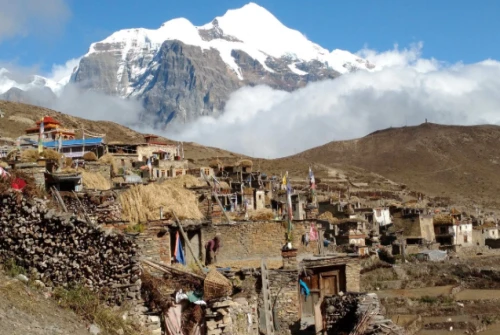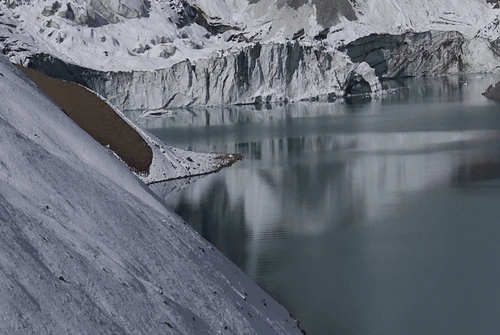Hiking in Nepal
A Checklist
Immunizations: Though, Nepal doesn’t have official vaccination requirements, it is nevertheless a good idea to consider some vaccines before coming here. See Immunization chapter under Safety for more details. It is also a good idea to read the chapter on Pre-existing Conditions before leaving home. Here is a list of the most relevant ones only:
Travel Insurance: Before you set out also make sure you have travel insurance that covers helicopter rescues. See Insurance under Safety for more details. Also, make sure to register with your embassy with your itinerary details before leaving. Go to our Embassy section for links.
Flight Tickets to Nepal
Book a Hotel in Nepal: There are a lot of review based web portals to book hotels in Kathmandu. However, it shouldn’t be much of a problem to get a room even if you haven’t booked in advance.
Packing Tips: Indeed exciting times we live in. Just make sure you don’t pack off valuables in your luggage for the international airport at Kathmandu isn’t too well renowned for packing everything in after a security check. Valuables are better off in your hand carry.
Things to do at the Airport in Kathmandu
Get a Nepali Visa: Visa on Arrival for most countries. Need USD 25(15 days)/ USD 40 (30 days)/ USD 100 (90 days) in one of these currencies: Euro, Swiss Franc, Pound Sterling, US Dollar, Australian Dollar, Canadian Dollar, Hong Kong Dollar, Singapore Dollar and Japanese Yen. You will need your passport and 1 passport size photo.
Get a Nepali SIM Card: Both NTC and Ncell. two of the most popular telecom companies, provide SIM cards based on GSM technology. Tough luck if your phone is of the CDMA kind.
Comprehensive Packing List for Trekking in Nepal
Both branded items and local take on branded items are available in Kathmandu. It is totally possible to get everything and anything you will need for a trek here. A word of cautions about local products though: Being labeled North Face or Mountain Hardwear, as most local products are, doesn’t bless them with durability. However, there are good fakes and bad fakes and most are okay for the price. If you spend some time checking and rechecking the stuff especially the zippers and stitching, it will provide service for at least one trek. Or you could just stick to one of the branded outlets in Thamel.
However, bringing some stuff from home will save you time in Kathmandu and will also give you peace of mind. Also if you don’t know, the dress code for the mountains is layers. And avoid cotton inners at all costs.
Gear from your Home Country
Trekking Boots- Lightweight, waterproof, ankle support, some toe room and most importantly broken in.
Daypack/Rucksack with pack cover- If you plan on hiring porters, a 30-liter bag should be enough. Otherwise look for a 70 liter one.
Passport size photos- 5-7 should be good.
Sunglasses with straps- Straps are important as sunglasses happen to be the one thing that people misplace most often while taking pictures or resting.
Spare glasses/lenses- If you wear glasses or contact, having a spare is very important.
Inner Thermals- Both top and bottom will make your trek that much more enjoyable.
Fleece- Great for layering with wind/waterproof jacket for walking.
Wind/Water Jacket- Make sure it is breathable and is waterproof.
Down Jacket- Mornings and evenings can be pretty chilly. Will make your stay at camp and short excursions that much more comfortable.
Fleece pants- So you can remain warm and feel clean during the evenings.
Wind pants- Waterproof breathable is recommended.
Gloves- Make sure it is at least windproof.
Underwear- 4-6 should carry you through a two-three week trek.
Flashlight- Look for LED head torches.
Camera with extra battery- One extra battery should be good as charging can sometimes be a bit of a hassle. Also, you cannot charge, if you don’t have a charger. Do not forget that.
Socket Adapter- Many sockets in Nepal are of Type C that is they have circular pins. It will be handy to have an adapter just in case.
Water filters or Water purification tablets- To give you peace of mind and protection when you aren’t sure of the water. Water filters are amazingly small and efficient these days.
Optional Gear you should consider bringing from your Home Country
Vitamin supplements- One thing that you will be short on during a trek is Vitamin C. Supplements are always welcome.
Zip locks- Useful in oh so many different ways, for first aid kits to toiletries to documents.
Running shoes- Great to keep your feet comfortable in treks like ABC, Annapurna Circuit and Manaslu in which a sizeable portion of the trek goes through low country.
Swiss Army Knife- Pack it off in your luggage if you don’t want it confiscated at airports.
Binoculars- Consider small and light ones unless watching wildlife is your main purpose.
Books- A trek is a perfect time to catch up on reading. However, it would be tough to finish more than 2 books in a single two-three week trek.
Tablet computers- Entertainment at evenings.
Gaiters- Keeps your feet dry and warm if the weather takes a turn for the worse.
Gear you can easily get in Nepal
Trekking trousers- 2 pairs. Lightweight and loose.
Trekking shirts- 2 pairs. Collared ones are better. Avoid cotton.
Woollen cap
Trekking poles- You back and legs will love you for these, especially in downhill stretches.
Water bottle- Get 2 with a wide mouth and which can take in hot water.
Sandals- Great for giving your feet a breather during the evenings.
Buffs- 3. Can be used as a neck gaiter, headwear, to mask, hairband and a whole bunch of other ways. One of the best use however is to cover your nose and mouth at high altitudes to hydrate your breath and avoid the cold dry mountain air. Make sure to keep it rather loose around your nose though and your lungs will love you for it.
Sleeping Bag liner- A light silk liner is good enough rather than the heavy fleece ones. Its main purpose is to protect you from lodge blankets that are washed at most twice a year.
Socks- 3 pairs are more than good enough. Make sure they are thick woolen ones. For treks that go through low country like Annapurna Circuit and Manaslu Circuit, you might consider getting 2 more pairs of lightweight socks too.
Sunscreen- SPF 30-50 will be good enough. There is little point in going over that. However, make sure it is rated UVA in addition to UVB.
Lip Balm- Moisturizing and SPF 30 necessary.
Toilet paper- 2 rolls should be good enough.
Toothbrush
Toothpaste
Shower Gel- Travel size or sachets ideal as you won’t be showering as much during a trek.
Shampoo- Travel size of sachets are ideal.
Towel- A small one will be more than good enough.
Moisturizing cream- That cold dry mountain air will take its toll on your skin.
Hand sanitizer
Plastic Bags- 2 large ones 3 small ones. Comes in very handy to put in your dirty laundry
Snacks- Carry some chocolate bars and nuts for a quick munch before lunch. Don’t carry too much as you can find them in lodges all along the trails.
Optional Gear you can easily Get in Nepal
Sun Hat/Baseball Hat- Great for protection from the sun when it is still warm enough.
Neck gaiter- A buff can be used in place of this. But this one comes in handy
Deodorant- Your partner will love you for this.
Diary
Pen- Carry some spares.
Kit Bag and lock- If you plan to hire a porter, a kit bag comes in handy. Make sure you get a lock too. Combination ones are easier.
Medical Kit Checklist
Due to lax prescription requirements, most of the items are easier to get in Kathmandu.
Povidone-Iodine cream- 1 tube
Cotton- 1 roll
Dressing Gauze- 5 pcs
Crepe Bandage- 2
Band-Aids- 10
Dressing tape- 1
Moleskin/ 2nd Skin- 1 packet
Calamine- To aid in skin healing due to sunburns or chaffing.
Paracetamol 300 mg- 20 tablets. For mild headaches.
Ibuprofen 400 mg- 10 tablets. To relieve moderate to severe pain.
Throat lozenges- 20. For cough and sore throat. Can be used preventively against the cold dry mountain air.
Decongestant- 10 tablets- For nasal congestion. Non-drowsy kinds like pseudoephedrine recommended.
Antihistamine 10 tablets- For allergies.
Antiemetic 10 tablets- To control vomit and nausea.
Azithromycin 500 mg- 3 tablets. For bacterial diarrhea.
Omeprazole 20 mg- 10 tablets. For gastric problems.
Ciprofloxacin 500 mg- 10 tablets. For bacterial diarrhea.
Tinidazole 2 g- 3 tablets (500 mg- 12 tablets). For giardia and amoebic diarrhea.
Acetazolamide (Diamox) 250 mg - 20 tablets. To aid acclimatization and AMS treatment.
Dexamethasone 4 mg - 10 tablets. To be used under expert supervision to treat AMS.
Nifedipine 60 mg - 10 tablets. To be used under expert supervision to prevent and treat HAPE.
Loperamide 2 mg- 20 tablets. To control diarrhea.


 based on 6 reviews
based on 6 reviews
